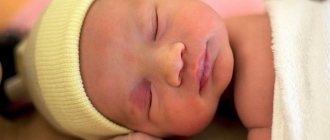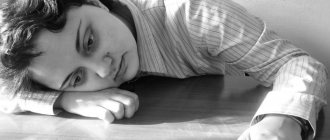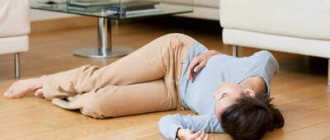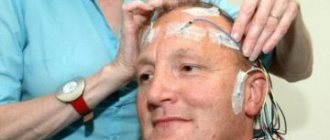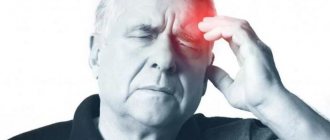Learn more about diseases starting with the letter “D”: Debility, Double-wave viral meningoencephalitis, Dementia with Lewy bodies, Depressive neurosis, Dermal sinus, Cerebral palsy, Jacksonian epilepsy, Diastematomyelia (diplomyelia), Discogenic myelopathy, Dystrophic myotonia Rossolimo-Steinert-Kurshman, Diabetic encephalopathy, Dyscirculatory encephalopathy, Diffuse axonal damage to the brain, Benign rolandic epilepsy.
In medicine, a state of constant sad mood, physical inactivity and general lethargy is distinguished, and this type of disorder is called depressive neurosis. In the presence of this problem, sleep disturbances and vegetative-somatic disorders are observed, but the problem does not affect optimism about the person’s future, professional activity and does not cause strong personality changes.
To make this diagnosis, you need to make an appointment with a psychoneurologist, who, after consultation, will prescribe a specific treatment. Most often these are psychotherapeutic techniques, medications and physical therapy.
General information about the disorder
In 1895, doctors introduced the term “neurotic depression,” which is still used today in neurology, psychiatry and psychology. Neurotic depression is identical to the definition of “depressive neurosis.”
Not all doctors who study this problem and treat people with depressive neurosis claim that the disease is independent. For example, experts from America include neurosis in the concept of situational depression.
Most often, people with a straightforward and purposeful character encounter neurosis, as well as those who are categorical in their opinions and constantly restrain the external manifestation of their internal experiences. The problem is diagnosed a little less often in people with low self-esteem, who often cannot make a definite decision for themselves in a given situation, and have a hard time experiencing any changes in life.
Cost of services
| TREATMENT OF DEPRESSION, NEUROSIS | |
| NAME OF SERVICE | price, rub. |
| Consultation with a therapist (observation) | 3,000 rubles |
| Consultation with a neurologist (observation) | 3,000 rubles |
| Consultation with a psychologist | 2,000 rubles |
| Psychiatrist consultation | 5,000 rubles |
| Consultation with the head of the department | 4,500 rubles |
| PROMOTIONS AND DISCOUNTS | |
| When applying again | 5% discount on treatment |
| Disabled people and war veterans | 5% discount on treatment |
| Large families | 10% discount on treatment |
* Dear patients! The administration tries to promptly update the price list posted on the website, but in order to avoid possible misunderstandings, we ask you to clarify the cost of services on the day of your call by calling 24/7.
The posted price list is not an offer.
Causes of the disease
External psychotraumatic circumstances can plunge you into a state of depressive neurosis. The reasons for which the disorder is caused are most often significant for the patient and differ in the duration of the course.
There are two groups of traumatic situations that lead to this diagnosis, namely:
- Numerous failures occurring at the same time in several areas of activity. Such circumstances make the patient feel that his life has failed and drives him into depressive neurosis.
- Circumstances of emotional deprivation. These circumstances are characterized by forced concealment of relationships, the inability to establish contact with a loved one, long-term separation from people dear to the heart, and the lack of opportunities to engage in activities that please the soul.
If a patient is affected by traumatic circumstances for a long time, he is often diagnosed with depressive neurosis. During this state, the patient does not see any opportunities to solve the situation, and instead of looking for a way out of the problem, all efforts are directed toward hiding the negative emotions that arise against this background. This behavior and internal psychological state is reflected in the patient’s health status. First of all, the central nervous system suffers and appears as a vegetative-somatic disorder.
How to distinguish depression from neurosis
Despite their similarities, neurosis and depression are different diseases. Neurosis is established when the patient is in conflict for a long time. Symptoms from the nervous system are more pronounced than from the internal organs.
Neurosis manifests itself in the form of rapid and frequent changes in mood during the day, difficulty concentrating on certain activities, and sleep disturbances. Also among the signs are a decrease in sexual desire and the appearance of body pain.
A distinctive feature of neurosis is weakness and irritability to any external factor. In this case, a person can become upset to tears over even minor trifles.
Associated symptoms include low blood pressure, impaired attention and memory, inability to concentrate, tinnitus and abdominal pain.
Patients often complain of decreased sexual desire. This is precisely the reason for contacting a sexologist.
Depression manifests itself as a depressed state. The causes are internal psychological reasons. Patients exhibit symptoms such as lethargy, depressed mood, and difficulty thinking. The person avoids communication with others, he experiences sleep disturbances, loss of appetite, and lack of sexual desire.
As a result of a depressed mood, facial expressions become less pronounced, and constant melancholy or sadness is noted. Many characterize this condition as a “stone on the heart.” A hallmark of depression is the lack of reaction to good news or bad news.
In a depressed state, they also note long-term thinking about answers and difficulties in comprehending questions. Depression is characterized by taking a long time to fall asleep. The next morning you are left feeling tired and exhausted.
Patients describe their condition as uselessness and lack of talent. Appetite is significantly reduced, which leads to rapid weight loss. A person avoids communication and withdraws into himself so much that he is unable to take care of someone else or even himself.
Symptoms of neurotic depression
The classic course of the disease is manifested by three typical symptoms, namely:
- vital activity decreases, sometimes general lethargy appears;
- mood is suppressed;
- thinking and speech slow down.
When the disease just begins to develop, the patient walks around in a bad mood, general weakness, and also complains of vegetative-somatic manifestations, for example, dizziness, surges in blood pressure, palpitations, poor appetite, and problems with the gastrointestinal tract.
In such cases, patients are sent to a therapist, who in turn begins to treat the symptoms. But, in this case, therapeutic treatment will not give positive results. The feeling of weakness only intensifies, arterial hypotension appears, and spastic colitis often develops. The mood only worsens, constant sadness and apathy develop, the person practically does not smile or laugh, even if any joyful events occur in life.
Patients are also characterized by a lack of motor activity, poor facial expressions, and quiet and slow speech. But it is worth noting that in relation to professional activities, people with this problem show a greater desire for work.
Very often, sleep is disturbed, it is difficult to fall asleep, and in the middle of the night the patient may wake up abruptly with a strong heartbeat and a feeling of anxiety. In the morning, people with the disease feel very weak and depressed, but such people do not have anxiety or feelings of melancholy in the morning.
The symptoms of depressive neurosis differ from the clinical symptoms of classical depression, namely, that they do not reach the level of psychosis, but have a less deep neurotic expression.
People can control themselves and adequately perceive everything that happens around them. They do not think about suicide and have an optimistic outlook on the future. Patients are able to think about their plans from a positive point of view, while not considering the unfavorable situation that happened to them. This manifestation is called a symptom of “hope for a bright future.”
A look at the treatment of depression in neurological patients
Depression is an extremely common illness. It often accompanies somatic and neurological diseases and further worsens the quality of life and is more difficult to treat. At the same time, neurological patients are more susceptible to depression than patients with somatic pathology. [1]
The prevalence of DP among patients with organic neurological pathology varies greatly according to different researchers. Thus, depressive disorders in patients who have suffered a stroke are detected from 5 to 68%; for vascular dementia - from 0 to 71%, averaging 30%; for epilepsy - from 9 to 55%; for multiple sclerosis - from 10 to 60%; for Parkinson's disease - from 25 to 50%; in Alzheimer's disease - from 30 to 50% [1,3].
Key words: depression, treatment, neurological patients.
Diagnosis of depression in neurological practice is objectively difficult due to the predominance of erased chronic forms of depression, atypical depression, subsyndromal depressive states and “overlapping” general symptoms of depression and neurological diseases [1].
The need to identify and treat depression in neurology is caused by the following main reasons:
- depression always modifies and worsens the course of a neurological disease;
depression significantly limits the patient’s rehabilitation options;
- depression significantly reduces the patient’s quality of life;
- long-term, untreated depression is a risk factor for the development of neurodegenerative and cerebrovascular diseases.
After identifying depression, you should decide in which cases to manage and treat the patient yourself, and in which cases to contact a psychiatrist. A neurologist can only treat “minor” depression, in which the main symptoms (depressed mood and anhedonia) are mild and are accompanied by additional symptoms (at least 2, but not more than 4), and no significant social maladaptation is observed [1,4]. Also, the competence of neurologists includes the management of patients with subsyndromal depression - depressive disorders that, according to clinical characteristics, do not fall under the diagnostic criteria of even a mild depressive episode.
Consultation with a psychiatrist is required in the following cases:
- any depressive episode with suicidal thoughts;
- any major depressive episode, especially with psychotic disorders;
- in the absence of a therapeutic response to an adequate course of treatment with antidepressants in optimal therapeutic doses;
- bipolar depressive disorder.
The first question that arises for a neurologist is how much drug treatment using antidepressants is necessary for the patient. In a significant percentage of cases when emotional disorders are caused by external causes, depression is transient and regresses on its own [4]. Often, a good effect can be obtained with the help of psychotherapy, which, if necessary, can be supplemented with antidepressants [5].
The question of starting drug therapy becomes relevant if symptoms persist for 2–4 weeks. There are two more situations in which the tactics of monitoring a patient without drug intervention is erroneous. First: if the doctor is sure that the patient has been depressed for a long time. Most patients can fairly accurately identify the moment when they began to experience symptoms of depression (usually in connection with an emotional experience). Second: if the severity of the disorders is very significant and the disease threatens the life or health of the patient. This is not limited only to cases where the patient expresses suicidal intentions - urgent intervention is also required in situations where the patient refuses water and food or stops moving. [4]
To treat depression, drugs of different groups are used - monoamine oxidase inhibitors (MAOIs), antidepressants (tricyclic and tetracyclic, dopaminergic, selective serotonin reuptake inhibitors, selective serotonin and norepinephrine reuptake inhibitors, selective serotonin reuptake stimulators) [1,6]. To treat mild depression, herbal medicines can be used.
Among the MAO inhibitors, selegiline is used in neurological practice. At a dose of 20–40 mg/day, selegiline (maximum 60 mg/day) has antidepressant properties, but when used in such doses it loses its selectivity for MAO B [7].
Antidepressant drugs are effective in 50–60% of patients with depression [8].
Prescribing antidepressants is advisable for a combination of dementia and depression. These drugs are believed to be effective in both Alzheimer's disease and vascular dementia. However, it should be taken into account that the course of depression in these categories of patients may be of a fluctuating nature, i.e., an improvement in the patient’s condition may not be associated with taking antidepressants. In addition, one should take into account the surprisingly high effectiveness of placebos, in some cases comparable to the effectiveness of antidepressants. Unlike the treatment of psychosis in elderly patients with dementia, when minimal or even “homeopathic” doses of antipsychotics or benzodiazepines are used, standard, “adult” doses of antidepressants are used to treat depression in patients with dementia. The exception is tricyclic antidepressants, which are undesirable for use in dementia due to their anticholinergic effect [9].
Although some antiepileptic drugs have antidepressant activity, additional antidepressants are often required in the presence of depression. However, it must be remembered that most antidepressants can cause seizures. Treatment of depression in patients with epilepsy is recommended to begin with selective serotonin reuptake inhibitors. Since almost all antidepressants act on liver enzymes, careful monitoring of serum levels of antiepileptic drugs is necessary when prescribing them [10].
Selective serotonin and norepinephrine reuptake inhibitors are preferred for the treatment of Parkinson's disease.
When choosing an antidepressant for a patient with cerebrovascular disease, it is necessary to avoid prescribing drugs that can cause orthostatic hypotension or, conversely, increase blood pressure, impair cognitive functions, have cardio- and hepatotoxicity, have significant drug interactions, cause behavioral toxicity, or be life-threatening in case of overdose . Therefore, it is not recommended to prescribe tricyclic antidepressants to elderly patients with cerebrovascular diseases. The priority for the treatment of depression in this group of patients are antidepressants from the group of selective serotonin reuptake inhibitors: fluoxetine, fluvoxamine, paroxetine, sertraline, citalopram, escitalopram. An antidepressant should be prescribed in optimal therapeutic doses and for a period of at least six months. Escitalopram (Cipralex) is considered the most modern representative of this group of antidepressants with optimal clinical efficacy and, at the same time, good tolerability and minimal drug interactions.
The effect of antidepressants usually does not appear immediately, but after several weeks (usually from 3 to 6). After regression of depression symptoms, therapy is continued for 4–5 months. If the effect of treatment does not appear after 6–8 weeks, switch to an antidepressant of another group [2].
Among the serotonin reuptake inhibitors, the most commonly used currently are fluoxetine, paroxetine, sertraline, fluvoxamine and citalopram, which have a wide range of indications, including depression and anxiety, are easy to dose and have low toxicity even in high doses [2].
Because all of these drugs, with the exception of fluvoxamine, require only once daily dosing and are generally well tolerated, they are first-line drugs for the treatment of depression. These antidepressants are especially preferred in situations where depression is accompanied by aggressiveness or impulsivity. However, in 40–80% of cases, sexual dysfunction may occur while taking them. Patients may complain of gastrointestinal disorders [9].
One of the tricyclic antidepressants, which differs in structure and mechanism of action from other representatives of this group of drugs, is Azafen. It does not have anticholinergic properties, does not affect MAO and does not have an adverse effect on the cardiovascular system. In addition, this drug improves sleep; in this case, subsequent drowsiness does not occur.
The mechanism of action of Azafen is associated with non-selective inhibition of serotonin reuptake and an effect on the noradrenergic system.
Features of the therapeutic effect of Azafen are:
- a combination of antidepressant and anxiolytic effects;
- ability to normalize sleep;
- lack of anticholinergic effect;
good tolerability combined with high efficiency.
Treatment begins with Azafen at a dose of 25–50 mg/day in 2 divided doses, gradually increasing it to the optimal dose of 150–200 mg/day in 3–4 divided doses. The duration of the course is 1–1.5 months. When a therapeutic effect is achieved, the dose is gradually reduced and switched to maintenance therapy (25–75 mg/day). Azafen is well tolerated; in some cases, while taking it, headaches, dizziness and nausea, as well as allergic reactions, may occur. [eleven]
Literature:
- Voznesenskaya T.G. Depression in neurological practice // Difficult patient. 2003. T. 1. No. 2. P. 26–30.
- Voznesenskaya T.G. Antidepressants in neurological practice // Treatment of nervous diseases. 2000. No. 1. P. 8–13.
- Voznesenskaya T. G. Depression in cerebrovascular diseases // Neurology, neuropsychiatry, psychosomatics 2009. No. 2. P. 9–13.
- House A. Defining, recognizing and managing depression in neurological practice. Pract Neurol 2003;3:196–203.
- Smulevich A. B. Depression in general medical practice. M., 2000; 160 p.
- Krasnov V.N. Modern approaches to the treatment of depression // RMJ. 2002. T. 10. No. 12–13. pp. 553–55.
- Sunderland T, Cohen RM, Molchan S, et al. High-dose selegiline in treatment-resistant older depressive patients. Arch Gen Psychiatry 1994;51:607–15.
- Glushkov R. G., Andreeva N. I., Aleeva G. N. Depression in general medical practice // RMZh. 2005. T. 13. No. 12. P. 858–60.
- Devenand DP, Pelton GH, Roose SP. Depressive features in dementia. In: Evidence-based Dementia Practice. Ed by N Qizilbash et al. Oxford: Blackwell Sciences 2002, p. 695–98.
- Harden C.L. The co-morbidity of depression and epilepsy: epidemiology, etiology, and treatment. Neurology 2002;59:S48–S55.
- Andreeva N.I., Asnina V.V., Liberman S.S. Domestic antidepressants. Azafen // Chemical-pharmaceutical journal. 2000. T. 34. No. 5. P. 16–20.
How is depressive neurosis diagnosed?
One of the complicating factors during the establishment of this diagnosis is that the patient does not in any way connect his condition with psychogenic factors. During consultations with specialists, patients do not talk about the fact that they have a chronic traumatic situation. Therefore, very often doctors begin to treat accompanying symptoms.
It is important that people with such complaints visit not only therapists, but also a neuropsychiatrist. It is this doctor who will conduct a detailed questioning of the patient, which will help determine the cause of the disease and find out what experiences torment the person.
To exclude somatic pathologies, the patient is prescribed additional examinations:
- ECG;
- ultrasound diagnostics of the abdominal cavity;
- EEG;
- visiting a cardiologist;
- visiting a gastroenterologist.
It is important to visit a competent specialist who is able to differentiate depressive neurosis from hypochondriacal neurosis, asthenia, chronic fatigue, neurasthenia, and anxiety-phobic neurosis. Also, during diagnosis, the doctor must take into account the fact that the patient may have a combination of depressive symptoms and neurotic manifestations, forming hypochondriacal-depressive syndrome or any other.
It is important to carefully study the patient’s history and mental status, and then an accurate diagnosis will be established, and therefore treatment will be prescribed.
Treatment methods
To achieve results, treatment must be carried out psychotherapeutically, but also with medication, and also use physiotherapeutic techniques.
Neurotic depression is most often treated by persuasion. During therapy, a logical study of the very situation that provoked this condition is carried out and the goal of the study is to change the patient’s attitude to the situation. Sometimes self-hypnosis is also used, which consists of pronouncing certain phrases to the patient that will help him form a new, personal view of the current situation.
Drug treatment involves the patient using antidepressants. Also, if the specific course of the disease requires it, antipsychotics, nootropics, psychostimulants, sedatives and tranquilizers can be prescribed. But it is impossible to achieve complete recovery of patients using only medications; parallel psychotherapy is required.
Physiotherapeutic methods of influence that help patients cope with depressive neurosis are the following procedures:
- electrosleep;
- massage: cervical-collar area; general massage (acupressure, phytomassage, classical, aromatherapy, Ayurvedic);
- reflexology;
- hydrotherapy.
What the doctor prescribes depends on the individual characteristics of the patient, so a consultation with a physiotherapist is mandatory. After examining and communicating with the patient, they will be prescribed all the necessary physiotherapeutic procedures, which in turn will have a beneficial effect on the psychological and physiological state of the patient, and will help to quickly cope with the problem.
Tendency towards fiction
Moreover, these inventions will indicate the special significance of the person. He strives to tell actual episodes from his biography with exaggeration of his own participation, or he can invent whole stories.
If senile anxiety, emotional withdrawal and, to a certain extent, depression perform peculiar protective functions, then the feeling of uselessness contributes to both psychological and biological withering. It is often accompanied by a feeling of insecurity. Unfortunately, this perception of life is typical for older people, although it may not at all correspond to the real life situation: older people can have caring relatives, be of real benefit, but still feel a sense of uselessness.
The feeling of uselessness has two sources. The first is when a person ceases to be needed by himself and projects this attitude onto others. The second source is human weakness. With retirement, the number of ways to be needed decreases due to a decrease in material wealth and physical strength, and this can be perceived as a threat to a person’s integrity.
Forecast
It is necessary to begin treatment as quickly as possible; in this case, the prognosis is favorable, and a complete recovery and return to a normal, full life are guaranteed.
If there is no treatment for the disease for a long time or the process is delayed, then there is a possibility of the disease transforming into a neurotic personality disorder. Therefore, if you notice in yourself or your loved ones any disorders and symptoms associated with depressive neurosis, especially if you know about concomitant psychotraumatic situations in a loved one, be sure to go to specialists who will help you quickly cope with the problem and return to normal everyday life.
Neurotic depression
Depression of a neurotic nature is one of the possible manifestations of psychogenic, neurotic, stress-related and somatoform disorders according to the ICD 10 classification of mental disorders. This is a depressive adaptation reaction that occurs to negative events for a person, as well as a depressive syndrome in the structure of various neurotic and somatoform disorders.
Neurotic depression is also considered typical of the second stage of development of neurotic disorders (neurotic reaction - neurotic state - neurotic development).

